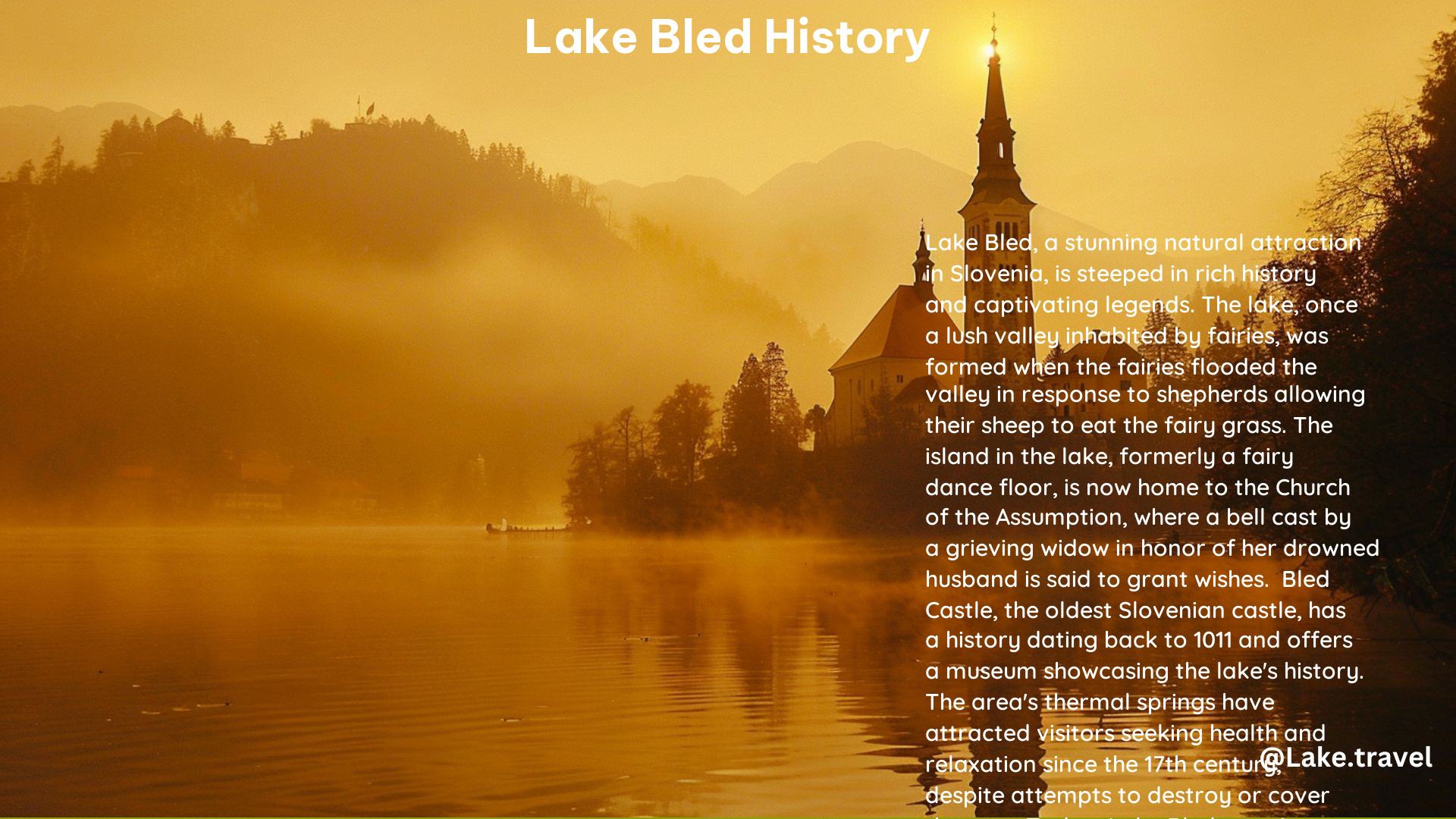Lake Bled, nestled in the heart of the Julian Alps in northwestern Slovenia, is a breathtaking natural wonder with a rich and captivating history. From its origins as a glacial and tectonic lake to its role as a significant cultural and religious center, the story of Lake Bled is one that has captivated visitors for centuries.
The Geological Origins of Lake Bled
Lake Bled is a unique natural formation, created through a combination of glacial and tectonic processes. The lake’s origins can be traced back to the last ice age, when glaciers carved out the basin that would eventually become Lake Bled. Over time, the melting of these glaciers and the shifting of the earth’s crust led to the formation of the lake we see today.
The Bronze Age and the Cult of the Lake

The history of Lake Bled can be traced back to the Bronze Age, when the area was an important cult center. Archaeologists have discovered gold appliqués near the lake shore that represent solar and lunar years, indicating the significance of the lake in the religious and cultural practices of the time.
The Rise of Bled Castle and the Bishops of Brixen
One of the most iconic landmarks of Lake Bled is the medieval Bled Castle, which was first mentioned in a deed of donation in 1011. The castle served as the residence of the bishops of Brixen for eight centuries, and its Romanesque tower, Renaissance-style buildings, and chapel with illusionist frescoes have made it a popular tourist attraction.
The Emergence of Tourism in Bled
Tourism in Bled began in the 17th century, with pilgrims visiting the Church of the Assumption on the island in the middle of the lake. The lake’s thermal springs also attracted visitors seeking health benefits, although some attempts were made by castle administrators to destroy or fill them in. As the area’s idyllic landscape became more widely known, tourism for leisure purposes began to increase.
The Culinary Legacy of Lake Bled
One of the most famous culinary specialties associated with Lake Bled is the cream pastry known as kremna rezina or kremšnita. This delectable treat was designated a protected dish of designated origin in 2016, cementing its place as a beloved part of the region’s cultural heritage.
The Archaeological Insights into Bled’s History
The history of Bled’s settlement can be traced back to the Stone Age, with significant Slavic settlements in the late Iron Age. Archaeological sites, such as necropolises at Pristava pod Gradom and Želeče, provide valuable insights into the area’s historical development, including the first wave of settlement in the 7th century and the second wave in the 9th and 10th centuries.
Conclusion
Lake Bled’s history is a captivating tapestry of geological, cultural, and historical significance. From its origins as a glacial and tectonic lake to its role as a significant religious and cultural center, the story of Lake Bled is one that has captivated visitors for centuries. Whether you’re drawn to the lake’s stunning natural beauty, its rich history, or its culinary delights, a visit to Lake Bled is sure to leave a lasting impression.
References:
– Wikipedia – Lake Bled
– Bled.si – The History of Bled
– Wikipedia – Bled Castle
– Trafalgar – 5 Incredible Lake Bled Facts
– Visit Croatia – Lake Bled
